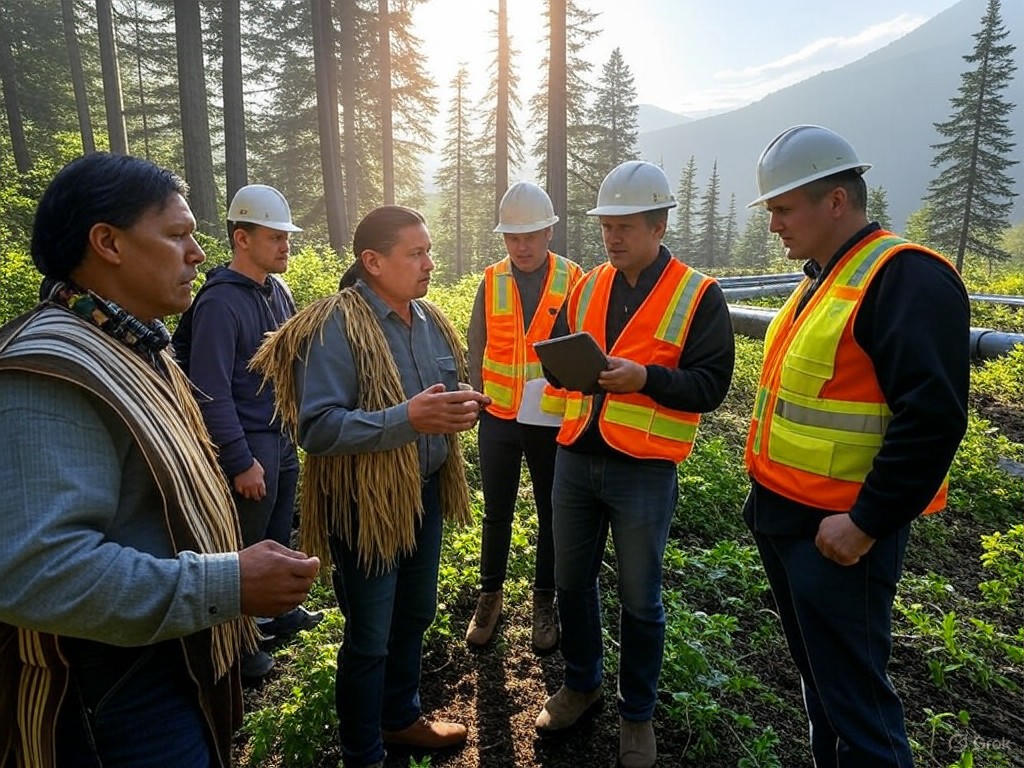BC’s Infrastructure Push: A Global Economic Driver?
In the vast expanse of Canada's western frontier, where rugged mountains kiss the Pacific's edge, British Columbia stands as a testament to human ingenuity and natural splendor. Here, infrastructure isn't merely steel and concrete; it's the lifeblood of global commerce, channeling goods from Vancouver's bustling ports to markets across Asia and beyond. Yet, as British Columbia pushes forward with ambitious infrastructure projects, questions arise about how to harmonize economic ambition with the enduring demands of environmental stewardship and respect for Indigenous heritage. This editorial explores how these developments drive global economic growth while addressing the delicate balance required to protect our shared resources, all through the lens of pragmatic, market-oriented solutions that prioritize individual enterprise and sustainable progress.
The Engine of Global Trade: British Columbia's Infrastructure Renaissance
British Columbia's infrastructure initiatives represent a strategic pivot toward enhancing connectivity in an increasingly interconnected world. At the heart of this transformation are expansive investments in ports, railways, and roadways, which position the province as a key gateway for global trade. The Port of Vancouver, for instance, handles over $300 billion in annual cargo, serving as a critical node in the supply chains that link North America to Asia-Pacific economies Port of Vancouver Annual Report. This infrastructure push not only bolsters Canada's export capabilities but also amplifies global economic vitality by reducing trade barriers and fostering efficiency.
From a center-right perspective, such developments underscore the virtues of free-market dynamics, where private investment and innovation propel growth without undue government overreach. Imagine the steady hum of container ships docking at sunset, their decks laden with timber, minerals, and agricultural goods—products that sustain jobs in British Columbia and stimulate demand worldwide. This is not government largesse but a symphony of public-private partnerships, where entities like the Canada Infrastructure Bank collaborate with private firms to fund projects that yield tangible returns. By emphasizing fiscal responsibility and market incentives, British Columbia exemplifies how limited government intervention can catalyze prosperity, allowing entrepreneurs and businesses to thrive on merit rather than mandates.
Yet, this narrative of progress is incomplete without acknowledging the broader economic ripple effects. Infrastructure enhancements in British Columbia have contributed to a 15% rise in provincial GDP over the past decade, driven largely by exports in sectors like forestry and technology Wall Street Journal on Canadian Trade. Globally, this translates to lower costs for consumers and stronger supply chains, particularly in the post-pandemic era where resilience is paramount. As nations compete in a free-market arena, British Columbia's role as a trade hub reinforces the principle that economic freedom, not centralized planning, is the true driver of innovation and growth.

The Port of Vancouver at dusk, where ships from around the world converge, symbolizing British Columbia's pivotal connection to global markets and the economic opportunities it unlocks.
Analyzing the Economic Imperatives: Growth Amid Challenges
Delving deeper, the analysis reveals that British Columbia's infrastructure strategy is not just about physical expansion but about adapting to a dynamic global economy. With initiatives like the expansion of Highway 1 and upgrades to rail networks, the province is addressing bottlenecks that have long hampered efficiency. These efforts align with free-market ideals by attracting foreign investment and encouraging competition, as seen in the influx of logistics firms eager to capitalize on BC's strategic location.
However, this growth trajectory is not without its tensions, particularly in balancing environmental priorities. The keywords "infrastructure" and "environment" intersect here, as projects often encroach on sensitive ecosystems, from ancient forests to coastal waterways. Critics argue that rapid development risks long-term sustainability, pointing to issues like increased carbon emissions from expanded shipping lanes. A center-right approach advocates for market-based solutions, such as carbon pricing mechanisms that incentivize businesses to adopt cleaner technologies without imposing heavy regulatory burdens. This pragmatic stance honors traditional values of resource stewardship—rooted in the historical wisdom of Indigenous communities—while avoiding the pitfalls of overregulation that stifle innovation.
Evidence from recent studies supports this balanced view. For instance, a report by the Fraser Institute highlights how British Columbia's infrastructure investments have generated over 100,000 jobs, yet it cautions that unchecked expansion could exacerbate environmental degradation Fraser Institute Economic Analysis. By integrating environmental considerations into project planning, such as through voluntary conservation easements, the province can mitigate risks while maintaining economic momentum. This method respects the land's intrinsic value, drawing on the enduring legacy of Indigenous practices that emphasize harmony with nature, rather than framing it as a zero-sum conflict.
In this context, Indigenous priorities emerge as a critical factor. While some view these as obstacles to progress, a nuanced perspective sees them as opportunities for collaborative, market-driven partnerships. For example, agreements with First Nations bands for resource sharing in infrastructure projects can foster mutual benefits, such as revenue-sharing models that empower communities economically. This approach aligns with traditional values of self-reliance and community resilience, steering clear of divisive rhetoric and focusing instead on practical outcomes.
Evidence and the Path to Sustainable Growth
To substantiate these points, let's examine key data and external insights. According to Statistics Canada, British Columbia's trade volume with Asia has surged by 25% in the last five years, directly attributable to infrastructure enhancements Statistics Canada Trade Data. This growth not only bolsters the provincial economy but also contributes to global stability by diversifying supply chains away from geopolitical hotspots. Meanwhile, an analysis from the World Economic Forum underscores the environmental trade-offs, noting that while infrastructure drives GDP, it must incorporate green technologies to remain viable World Economic Forum Infrastructure Report.

A collaborative meeting between Indigenous leaders and engineers in British Columbia's forests, highlighting efforts to integrate traditional knowledge with modern infrastructure planning for sustainable economic growth.
Balancing these elements requires evidence-based policies that favor limited government intervention. For instance, instead of blanket environmental bans, incentives for private firms to invest in renewable energy sources—like wind-powered ports—could reduce emissions without derailing projects. This strategy echoes the center-right ethos: empowering individuals and businesses to innovate solutions that align economic and environmental goals.
Conclusion: A Prudent Path Forward
As British Columbia charts its course in the global economy, the imperative is clear: infrastructure must serve as a bridge to prosperity without compromising the natural and cultural foundations that define the province. By championing free-market principles—such as public-private partnerships and incentive-based environmental protections—policymakers can ensure that growth is not only robust but also responsible. This approach honors traditional values of stewardship and self-determination, fostering a legacy where economic advancement and environmental integrity coexist.
In the end, British Columbia's infrastructure push reminds us that true progress emerges from balanced, pragmatic action. Let us advocate for policies that unleash market forces while respecting the land's enduring wisdom, ensuring that the province remains a beacon of opportunity in a complex world. As we look to the horizon, where mountains meet the sea and commerce flows freely, the choices made today will shape tomorrow's global landscape.

